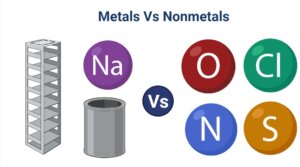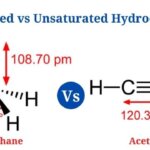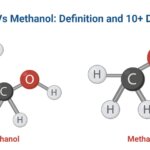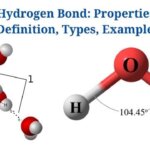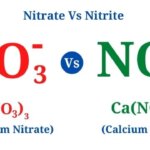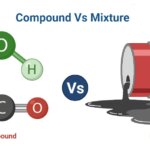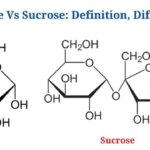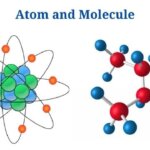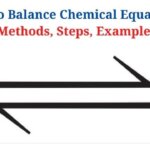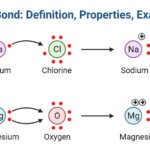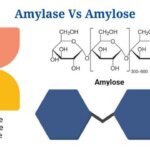Definition of Metals
Metals are a set of elements with distinct physical as well as chemical characteristics such as malleability, ductility, as well as electrical as well as thermal conductivity.
- Metals are found mostly beneath the Earth’s surface in the form of ores, that are various rocks as well as structures. Since they do not readily react with other elements, some metals may exist in their free state.
- These make up roughly three-quarters of all known elements discovered so far. Chemical naturally occurring metals make up around a quarter of the Earth’s crust.
- The term “metal” can refer to any substance capable of conducting electricity, as well as it has been discovered that elements that aren’t classified as metals can become metallic when subjected to high pressure as well as temperature.
- Most metals have a solid crystalline structure, with each metal having a distinct crystal structure defined by specific atom packing as well as symmetry.
- Metals often have fewer than half of the electrons in their outermost shell, that is essential for a stable arrangement.
- The metals’ atomic arrangements make it impossible for them to form compounds with other metals. They easily combine with nonmetals to generate a variety of compounds.
- The free electrons in the metal’s outermost shell are responsible for the majority of its characteristics.
- Metals have a densely packed crystal structure that gives them mechanical qualities like hardness, malleability, as well as ductility.
- Chemical elements are grouped according to their atomic structure on the right side of the periodic table.
- The periodic table divides metallic elements into five groups: alkali metals, alkaline earth metals, transition metals, post-transition metals, lanthanides, as well as actinides.
- Diverse metals may mix to make alloys that take advantage of different properties of different metals for the needed purpose.
- Metals have been utilised for ages in everything from cavemen’s tools for food as well as shelter to pieces of spacecraft as well as rockets that have been propelled into space.
- Many metals are utilised for decorative purposes due to their brilliance or sheen.
Definition of Non Metals
Nonmetals are a class of materials that lack the qualities of metals as well as are typically nonmalleable, non-ductile, as well as poor heat as well as electricity conductors.
- Unlike metals, nonmetals can exist in solid, liquid, or gaseous states as well as have a greater range of properties.
- Nonmetals have a stronger electron affinity as well as electronegativity since they have more than half of the electrons required to achieve a stable configuration on their outermost shell.
- There are seventeen nonmetals, the majority of that are gases, a few of that are solids, as well as bromine is a liquid.
- Solid as well as liquid nonmetals are found on the Earth’s surface, whereas gaseous nonmetals are usually found in the atmosphere.
- Solid nonmetals are frequently fragile since they are soft as well as amorphous, having no distinct structure or lattice.
- Nonmetals have a greater range of mechanical as well as optical qualities than metals, ranging from brittle to pliable as well as opaque to transparent.
- While nonmetals tend to react with metals to create compounds, depending on their ionisation energy as well as electronegativities, some nonmetals can react with each other as well.
- Nonmetals are found on the right side of the periodic table due to their atomic structure; however, hydrogen is a nonmetal that can be found on the left.
- Reactive nonmetals as well as noble gases are the two types of nonmetals available. Carbon as well assulphur are reactive nonmetals with moderate to weak nonmetallic characteristics that can form covalent compounds with metals.
- Nonmetallic nonmetals with strong nonmetallic characteristics, such as fluorine as well as oxygen, can form ionic compounds with metals.
- Noble gases are nonreactive stable nonmetals with a stable electronic structure that do not react with other elements.
- Nonmetals are important for a variety of reasons, as nonmetals such as carbon, oxygen, as well as hydrogen are the building blocks of life.
- Oxygen is one of the most vital nonmetals, as it is required for the survival of all living things.
- Other nonmetals, such as sulphur, phosphorus, as well as iodine, are also considered micronutrients by different living organisms.
Image created with BioRender
Key Difference between Metals and Nonmetals
(Metals Vs Nonmetals)
[ninja_tables id=”5581″]
Metals Examples
Aluminium is an example of a metal
- Aluminum is the most plentiful metallic element on Earth’s surface, as well as it is most typically utilised as a nonferrous metal.
- Aluminium is collected from rocks, flora, as well as animals in the form of compounds rather than in its metallic state.
- Sincealuminium has a strong affinity for oxygen, it normally has an oxide coating on its surface.
- Sincealuminium is soft, malleable, as well as ductile, it is utilised to make wires as well as sheets.
- In the periodic table, it is classified as a soft metal that belongs to the boron group of alkaline earth metals.
- The aluminium atom has 13 electrons, three of that are in the outermost shell. The atoms have a high electronegativity as well as a low ionisation energy.
- Since it is rust-free as well as lighter than iron, aluminium is being more widely employed in the automotive as well as textile sectors.
Nonmetal Examples
Nitrogen is an example of a nonmetal
- Nitrogen is the most plentiful element on the surface of the Earth as well as one of the most important components of all living things.
- Ammonia, nitric acid, as well as ammonium salts are all forms of nitrogen found on Earth. Some nitrogen may also be found in mineral formations.
- Nitrogen is the lightest element in the nitrogen family, as well as it is found in the periodic table’s p block.
- Nitrogen atoms have seven electrons in total, with five in the outermost orbit.
- Nitrogen quickly forms covalent connections with metals such as aluminiumas well as sodium.
- Nitrogen is a macroelement present in amino acids as well as nucleic acids, that are important biomolecules.
- In cryogenics, liquid nitrogen is also utilised to preserve sensitive chemicals.
Metals and Non Metals Citations
- https://www.yourarticlelibrary.com/science/metals-and-nonmetals-physical-properties-chemical-behaviour-and-uses-with-diagram/31645
- https://www.ducksters.com/science/chemistry/nitrogen.php
- https://www.britannica.com/science/nonmetal
- https://www.britannica.com/science/metal-chemistry
- https://chem.libretexts.org/Bookshelves/Inorganic_Chemistry/Modules_and_Websites_(Inorganic_Chemistry)/Descriptive_Chemistry/Periodic_Trends_of_Elemental_Properties/Periodic_Properties_of_the_Elements
- https://www.ausetute.com.au/spdfblocks.html
- https://www.answers.com/Q/Do_non_metals_have_high_melting_or_points
Related Posts
- Dissecting Microscope (Stereo Microscope) Definition, Principle, Uses, Parts
- Saturated vs Unsaturated Hydrocarbons: Definition, Differences, Examples
- Ethanol Vs Methanol: Definition and 10+ Differences
- Hydrogen Bond: Properties, Definition, Types, Examples
- Nitrate Vs Nitrite: Definition, Differences, Examples
- Aromatic Compounds vs Aliphatic Compounds: Definition, Differences, Examples
- Compound Vs Mixture: Definition, Differences, Examples
- Elements Vs Compounds: Definition, Differences, Examples
- Molecules Vs Compounds: Definition, Differences, Examples
- Hard water Vs Soft water: Definition, Differences, Examples
- Glucose Vs Sucrose: Definition and Key Differences
- 13+ Difference Between Atom and Molecule with Examples
- How to Balance Chemical Equation: Methods, Steps, Examples
- Ionic Bond: Definition, Properties, Examples
- Amylase Vs Amylose: Definition, Differences, Example

